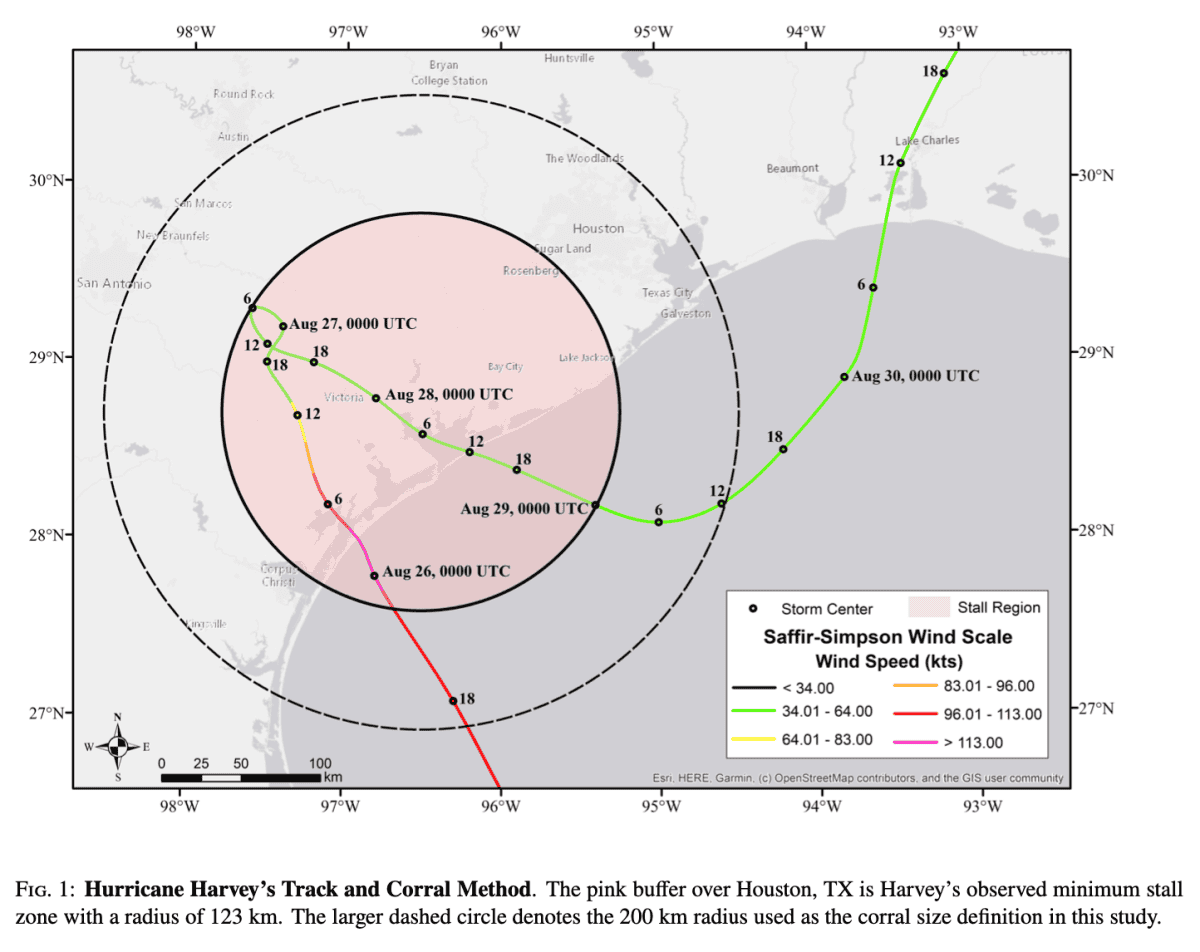
The article “Stalling North Atlantic Tropical Cyclones” was recently published in the Journal of Applied Meteorology and Climatology. In this study, SCIPP investigators Dr. Vincent Brown, Derek Thompson, and Dr. Barry Keim, in collaboration with Louisiana State University researcher Dr. Jill Trepanier and Texas A&M’s Dr. John Nielson-Gammon, created a new definition for what constitutes a slow-moving or stalling tropical cyclone (TC). After applying the definition, which constrains the storm center to a circle with a radius of less than or equal to 200 km over 72 hr, to the best available TC dataset, the team determined when and where storms tend to stall. In the study, two time periods were examined, 1900-2020 and 1966-2020, and tested for trends in the annual frequency of stalling storms.
The following results about stalling TCs were revealed:
- 15% of TCs met the stall definition, with ten storms having more than one stall.
- Stalls are more common in September and October.
- Stalls occurred more frequently near the Louisiana and Texas coasts, around the western and eastern Florida coasts, and near the Carolinas.
- TCs that experienced stalls had longer life cycles.
- Compared to all storms, the proportion of storms that experience a stall increased since 1966.
Stalling tropical cyclones tend to exacerbate impacts, so it is important to understand when and where stalls are likely to occur. Future research could expand upon the results found in this study by analyzing the potential meteorological origins of stalls. To read the paper, click here or the button below.
Shortly after the paper’s publication, the Washington Post released an article explaining the results and their potential implications for vulnerable communities. Dr. Jill Trepanier, lead author of the study, was interviewed by Scott Dance for the news article and provided further insight into the research. Read the article here.
